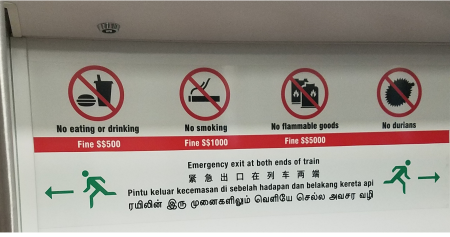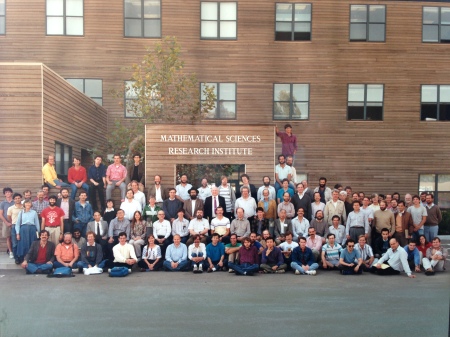Paul Erdős and Eric Milner published in 1972 A theorem in the partition calculus, where they established that if  is a countable ordinal and
is a countable ordinal and  , then there is a countable ordinal
, then there is a countable ordinal  such that
such that

meaning that any graph whose set of vertices is  either contains a clique (complete subgraph) whose set of vertices
either contains a clique (complete subgraph) whose set of vertices  has order type
has order type  or an independent set of size
or an independent set of size  .
.
The result is false if  is replaced by
is replaced by  , except for when
, except for when  , in which case we can take
, in which case we can take  as well, this is Ramsey’s theorem.
as well, this is Ramsey’s theorem.
The least  such that
such that  is
is  , in which case a stronger result holds, namely
, in which case a stronger result holds, namely  . In fact, more is true: the homogeneous set
. In fact, more is true: the homogeneous set  of order type
of order type  can be taken to be a stationary subset of
can be taken to be a stationary subset of  , and the set of type
, and the set of type  can be required to be closed, meaning that its
can be required to be closed, meaning that its  th member is the supremum of the other members of the set. Since stationary sets contain closed subsets of any countable order type, we see that
th member is the supremum of the other members of the set. Since stationary sets contain closed subsets of any countable order type, we see that  holds for any countable ordinal
holds for any countable ordinal  , where the subindex cl indicates that the sets of vertices of type
, where the subindex cl indicates that the sets of vertices of type  or
or  are required to be closed on their supremum.
are required to be closed on their supremum.
It is thus natural to wonder whether a closed version of the Erdős-Milner theorem holds. Jacob Hilton and I establish precisely this result in our paper Topological Ramsey numbers and countable ordinals.
This was a problem I had been curious about for a while, but kept not finding time to investigate. Finally I found a student at Boise State interested in working on this question for their master’s thesis, which gave me the perfect excuse to think seriously about it. I wrote a series of detailed notes for my student, who ended up leaving the program early, so I decided to continue and turn the notes into a paper. I even gave a preliminary talk on the results I had, together with some other results on the partition calculus of small countable ordinals. Hilton was a graduate student at that point, and he contacted me when he found out I was studying the problem, since this was precisely the topic of his dissertation. We decided to combine what we had, and soon we managed to extend our results and solve the full problem.
Many questions remain, as we believe the general bounds we found can be significantly improved, and it seems interesting to compute the optimal value of  such that
such that  for specific values of
for specific values of  and
and  . Omer Mermelstein has some striking results in this direction.
. Omer Mermelstein has some striking results in this direction.
Our paper appeared in Foundations of Mathematics, the proceedings of the conference in honor of Hugh Woodin’s 60th birthday. It can also be found on the arXiv and on my papers page.



 Posted by andrescaicedo
Posted by andrescaicedo 
